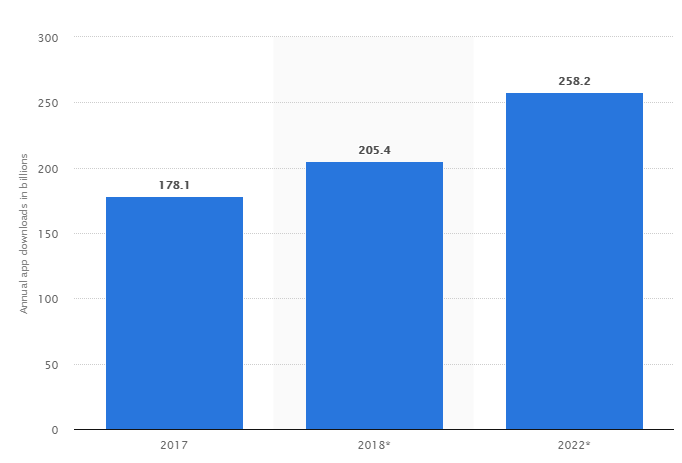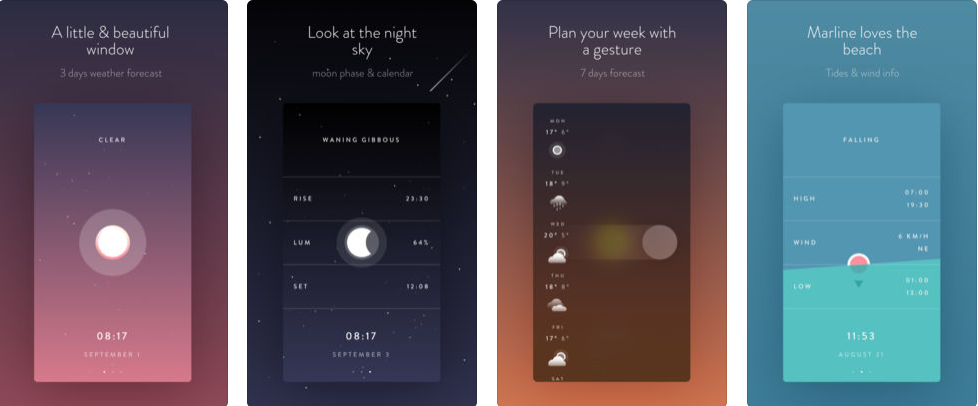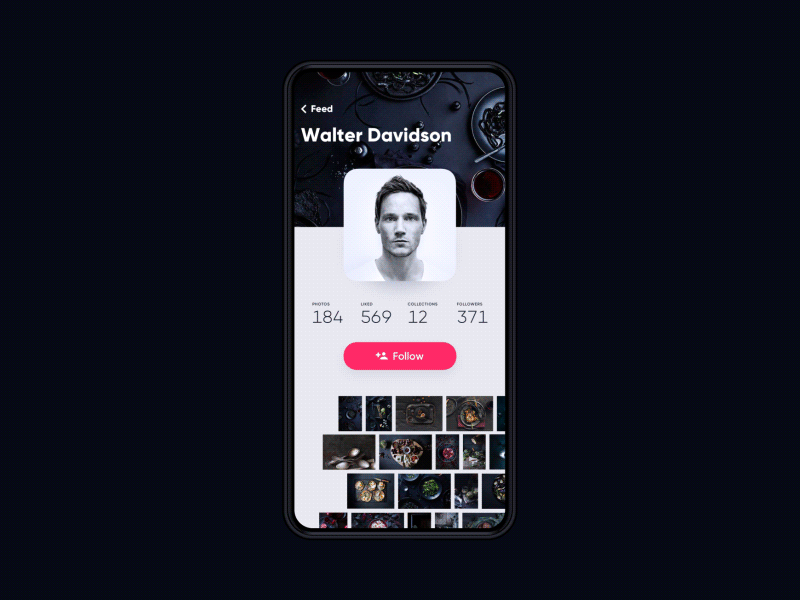What do you call a good mobile application? Something which looks attractive, something that lets you do tasks easily with a single click or something that responds to your actions quickly and smoothly? You are right if you said all of the above!
In today’s always-on world, there are millions of mobile applications that help us in several ways. Be it gaming, business, lifestyle, travel, entertainment, or educational apps, there are a huge number of them available for the users to choose and use. And the success and popularity of an application majorly depend on one single aspect- its User Experience!
According to Statista, the number of mobile app downloads worldwide in 2018 was 205 billion, which is expected to rise to over 258 billion in 2022. Check the following graph by Statista.

People are constantly in search of apps that simplify their daily tasks and there is a lot of clutter in the mobile app market today. It is therefore important to stand out from the competition by building mobile applications that are rich in user experience. No matter what features you have in your mobile application or how attractive the design is, if it does not load well or takes too much time to respond to actions, it is of no use. It is, therefore, necessary that the user experience is at the top of mind while designing and developing mobile applications.
Why does user experience (UX) matter in a mobile app?
User experience (UX) of a mobile app is how a person feels when he interacts with the app. The mobile app includes fundamental UX factors such as its design or aesthetics, intuitive, usability, performance, accessibility, ergonomics, etc. The user experience is a critical part of any mobile application because it is vital that the users be able to easily understand how to use the app and navigate it smoothly. Neglecting user experience can lead to users turning uninterested in your app, thereby bringing losses to your business. Startups and small businesses need to concentrate on providing rich user experience so as to create a great first impression and gain more users.
Now that you know why it is vital to creating mobile apps with rich UX, here are some things to consider while designing mobile apps for improved and trouble-free user experience:
1. Understand your users
While designing a mobile app, think not just about your business goals, but also focus on who your target users are and what they need. Put the users first, understand their point of view, recognize their needs and desires and then build the app based on that. Understand your target market and gain a deep knowledge about what their usage goals and environments are. When you design the app keeping in mind the users’ behaviour and attitude, they are more likely to connect to it and prolong to use it.
2. Keep the design minimal
The content, the way you place design elements, tabs and buttons all determine the standard of the mobile app’s user experience. Keep the content and interface elements to a bare minimum and get rid of anything that is actually not necessary, to simplify the use of the mobile app. Make the design of the app simple and the menus and links easy to navigate. Structure the information in a way that it is easy to perceive for the users and maintains a logical flow to help them easily navigate between tabs. Avoid unnecessary steps and functionalities that can turn your mobile app experience into an annoying one and lead to user dissatisfaction. Use only the core design elements ergonomically to efficiently take the users to the right point in minimum actions. Marline app is a beautiful example of it.

3. Make it accessible
Your mobile application needs to be accessible. The limitations of people’s vision on small screens, their finger size and agility need to be taken into consideration while designing mobile applications. Make the buttons and links larger, prominent and easy to hit. The information needs to be presented in a way that is easy to comprehend and the buttons and links should have obvious and clear text that tell the users what exactly it does.
4. Limit user efforts
Help your users find what they are looking for and satisfying their needs by limiting their efforts. Users tend to abandon the mobile app if it needs too much efforts from their side to access it. Take for example Photo App, a social network for photographers, allows them to share their portfolios elegantly and simply without putting huge efforts.

GIF Credit: Tubik Studio
Make sure you keep the forms as short as possible and only include the necessary fields in your app. Provide customized keyboard for the type of query; for example, display a numeric keyboard while asking for a phone number and show the “@” symbol while asking for an email address. Avoid ineffective interactive system and too many unnecessary functionalities. Remember, no matter what features your mobile app has, your users will not prefer using it if it is not easy to use and helpful.
5. Consider different mobile holds
People hold mobile phones differently. Some use a single hand, either left or right and some use both the hands. Some use the thumb to scroll and tap, while some use their index finger. Consider a few questions while designing your mobile application: What areas of your screen is the most comfortable to tap? Where do your thumb and fingers rest while your hand is not in motion? Which parts of your screen can be reached with your thumb? Make sure you place the most common and important elements and actions in the most reachable area of the screen.
6. Test your mobile app rigorously
Once you have finished designing and developing your mobile app, test all its functionalities. Keep the usability and user experience in mind while testing, instead of focusing just on the quality assurance. Test it on yourself and your potential users and get feedback to make necessary changes before releasing the app. Remote user testing is a great way to know what your users think and feel about your app and gives a full picture of your app’s user experience.
Wrapping Up
Mobile app usability and user experience determine the success of your app. A simple, yet highly user-friendly app goes a long way and delights and encourages your users to revisit it frequently. If you implement the above mentioned best practices while designing your next mobile app, it will turn out to be more user-friendly and engaging.
Author Bio
Yuvrajsinh is a Marketing Manager at Space-O Technologies, a mobile app design and development company. He spends most of his time researching on the mobile app and startup trends. He is a regular contributor to top publications like Entrepreneur, Yourstory and Upwork.



